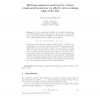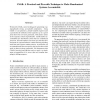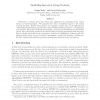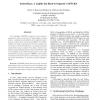247 search results - page 24 / 50 » On Pseudorandom Generators in NC |
DCC
2007
IEEE
14 years 7 months ago
2007
IEEE
Let p be a prime and let E(IFp) be an elliptic curve defined over the finite field IFp of p elements. For a given point G E(IFp) the linear congruential genarator on elliptic curv...
NDSS
2009
IEEE
14 years 2 months ago
2009
IEEE
We describe CSAR, a novel technique for generating cryptographically strong, accountable randomness. Using CSAR, we can generate a pseudo-random sequence and a proof that the elem...
PDP
2007
IEEE
14 years 1 months ago
2007
IEEE
We present an algorithm to compute the cycle structure of large directed graphs where each node has exactly one outgoing edge. Such graphs appear as state diagrams of finite stat...
APPROX
2009
Springer
14 years 2 months ago
2009
Springer
Small-bias, or -biased, spaces have found many applications in complexity theory, coding theory, and derandomization. We generalize the notion of small-bias spaces to the setting ...
ICDAR
2005
IEEE
14 years 1 months ago
2005
IEEE
The ScatterType CAPTCHA, designed to resist character– segmentation attacks and shown to be highly legible to human readers, is analyzed for vulnerabilities and is offered for e...




